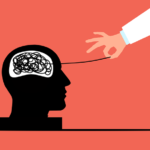Words may be the most obvious way we communicate, but they are far from the only way. Every action, every pause, every pattern of behavior speaks just as loudly—if not louder—than the words we say. Behavior is a language all its own, revealing truths people may not even realize they are expressing. It tells stories of intention, insecurity, confidence, avoidance, love, fear, and power. Even silence has a dialect.
The way someone moves through a room, how they react to discomfort, the habits they default to under stress—these are all sentences in an unspoken conversation. And just like with words, if you learn how to listen, you will start to see what people are actually saying.
What People Say Without Speaking
Have you ever noticed how some people always seem to be running late—not just once in a while, but as a pattern? That behavior alone tells a story. Maybe it signals disorganization, but more often than not, it’s about something deeper. Chronic lateness can be a form of control, a way of setting the pace on their terms. It can also reveal passive resistance—someone who doesn’t actually want to be somewhere but lacks the words to say so. Or it might be a subconscious way of testing whether they’ll still be accepted even when they show up late. Every repeated behavior holds a message.
The same goes for how people handle conflict. One person might get loud, aggressive, and domineering. Another might go completely silent, shutting down as if they’ve disappeared. A third might try to smooth everything over immediately, offering apologies just to make the tension go away, even if they aren’t actually sorry. Each of these behaviors is a sentence in their personal language. The aggressive person might be saying, “I refuse to feel powerless.” The silent one might be saying, “This is too much for me to process, so I’ll disconnect.” The peacemaker could be saying, “Conflict feels like rejection, and I need to make it stop at all costs.” None of them have to say a word for you to hear them.
Even small, seemingly insignificant choices tell a story. The person who consistently sits with their back to the wall in public places might be silently saying, “I don’t trust my surroundings.” The person who always leaves a party without saying goodbye might be saying, “I don’t like goodbyes because they make me feel vulnerable.” The one who never initiates plans with friends might not be disinterested at all—they might be saying, “I don’t believe people actually want me around unless they invite me.”
Patterns Are the Sentences of Behavior
A single action might not mean much, but repeated behavior forms sentences, paragraphs, entire chapters. One forgotten text isn’t a statement, but a pattern of ignoring messages is. One missed meeting doesn’t say much, but someone who always finds an excuse to cancel is saying something clearly.
Look at how someone treats time, energy, and effort. Do they consistently put in effort for others but hesitate when it comes to themselves? They might be speaking the language of self-sacrifice, struggling with their own worth. Do they always expect others to make the first move, whether in friendships, romance, or work? They might be revealing a belief that they should be pursued, or that rejection is so unbearable they won’t risk it.
Then there’s the way people react to kindness. Someone who deflects compliments, laughs off encouragement, or downplays their achievements isn’t just being humble—they’re revealing an internal script that tells them they don’t deserve praise. A person who eagerly absorbs every compliment and always looks for more might be revealing a deep craving for validation, an emptiness they are constantly trying to fill.
The Language of Avoidance and Presence
Where people place their attention—or avoid placing it—says more than they realize. Someone who “forgets” to bring up emotional topics, changes the subject when things get deep, or keeps conversations on the surface isn’t just casual; they’re avoiding something. Silence on a subject is often louder than words. If someone never acknowledges a particular past event, never mentions a person who was once important to them, or refuses to engage in a certain kind of conversation, they are communicating exactly where their wounds are.
On the flip side, notice who always shows up, who consistently follows through, who makes an effort without being asked. That kind of behavior speaks a steady, unwavering language of commitment. They don’t need to say, “I care” out loud—it’s evident in how they show up.
Presence is an undeniable language. Someone who listens, remembers the details, and makes space for others is saying, “You matter.” And just as presence speaks, so does absence. The person who is physically present but always distracted by their phone, who forgets what was said to them yesterday, or who never quite engages in the moment is saying, “I am here, but my mind is elsewhere.”
Behavior and Emotional Translation
Emotions don’t always translate directly into words, so they come out in action. A person who suddenly withdraws from a friendship or relationship might not know how to say, “I’m overwhelmed, and I don’t know what to do with this emotion.” Someone who becomes uncharacteristically angry over something small might be revealing frustration or fear about something much bigger. A person who over-explains themselves, giving reasons no one asked for, might be unintentionally saying, “I am afraid you won’t believe me, so I need to justify myself.”
Think about how people act when they are anxious. Some fidget, some overcompensate by talking too much, some shut down entirely. The anxiety itself is universal, but the behavioral expression of it is personalized, shaped by life experience, learned responses, and emotional needs.
The same is true for confidence. One person’s confidence looks like speaking boldly, taking up space, and asserting themselves in any room. Another person’s confidence is quieter—they hold steady eye contact, remain calm in conversation, and don’t feel the need to prove themselves. Confidence isn’t about volume; it’s about presence.
Reading Behavior With Compassion
It’s easy to judge behavior at face value. Someone cancels plans last minute, and we assume they don’t care. Someone seems distant, and we assume they’re uninterested. Someone is irritable, and we assume they’re just difficult. But when we understand behavior as a language, we start to see what’s actually being said.
The friend who always cancels might be struggling with social anxiety or burnout. The distant person might care deeply but fear rejection. The irritable one might be carrying an unseen burden. When we learn to read behavior not as random actions but as messages from the subconscious, we become more compassionate, both toward others and ourselves.
Final Thoughts
Behavior speaks in ways words never could. It tells the truth even when people don’t—or can’t. The more we pay attention, the more we understand. Not just what people are doing, but what they are truly saying. And just as we can read the behavior of others, we can begin to read our own, noticing the silent stories we are telling through our actions, habits, and choices.
If you want to know what someone believes about themselves, about relationships, about life, watch what they do. And if you want to change your own story, start by rewriting the behaviors that speak the loudest. Because whether we mean to or not, we are always speaking. The question is, are we listening?













